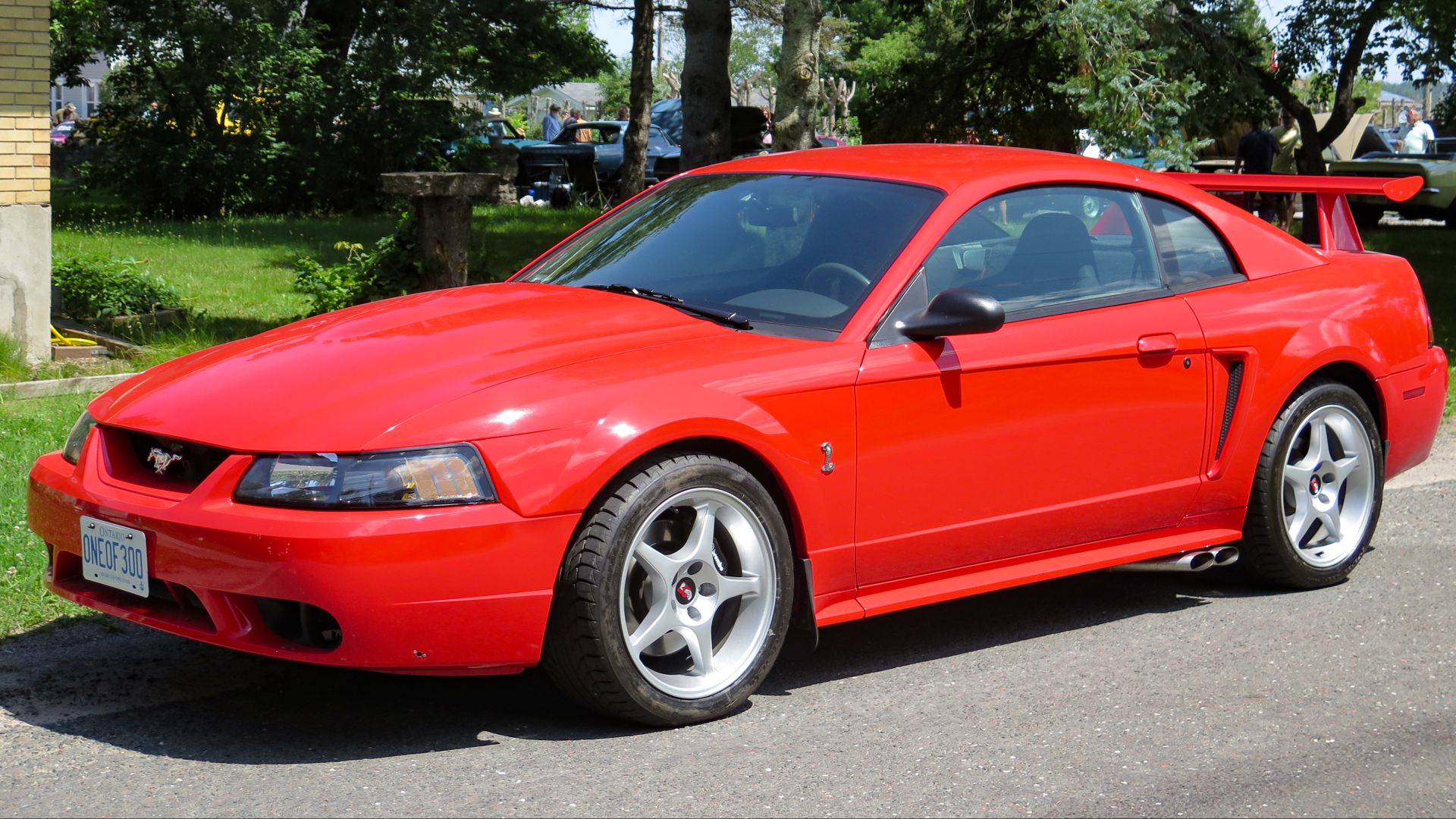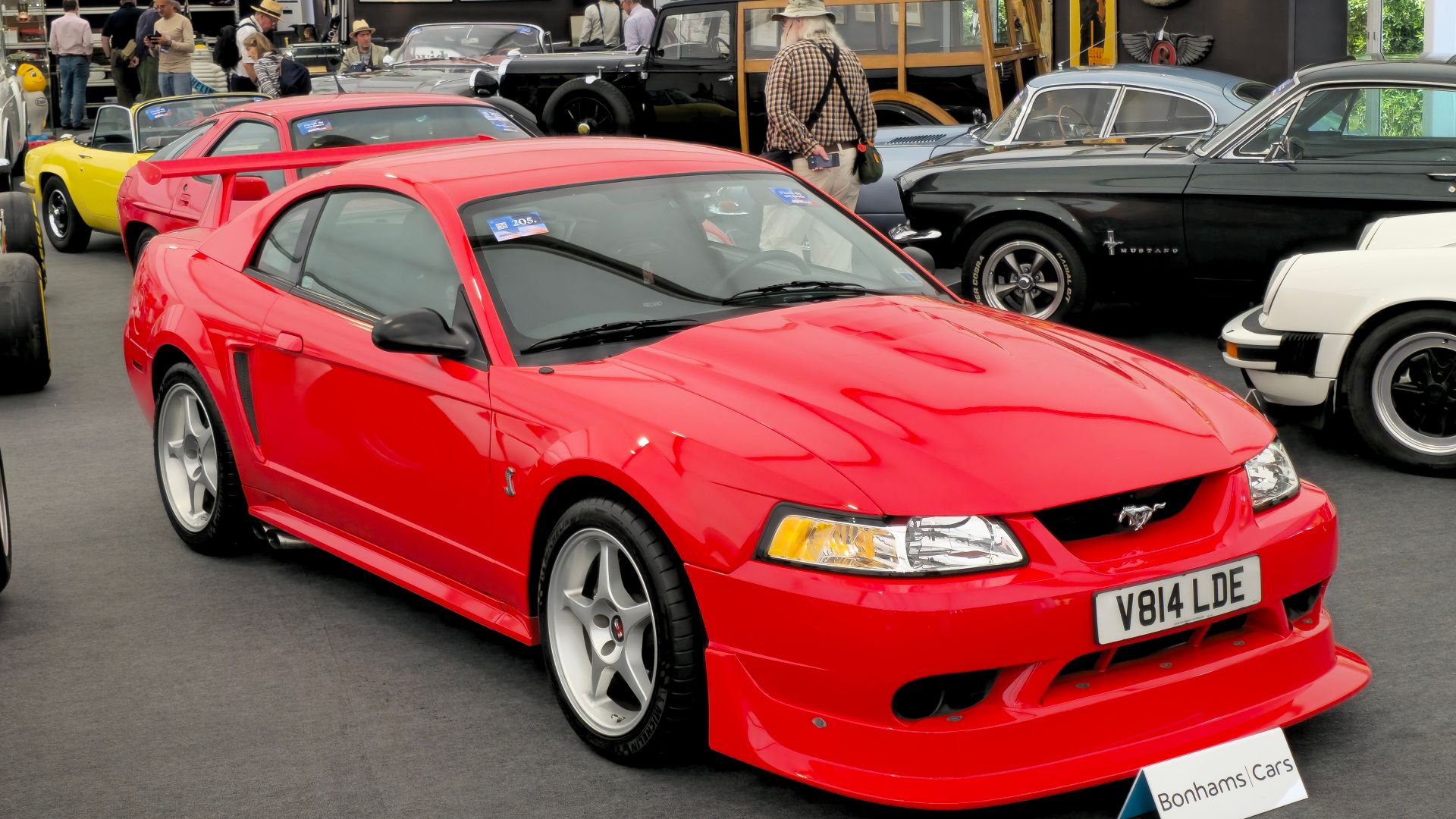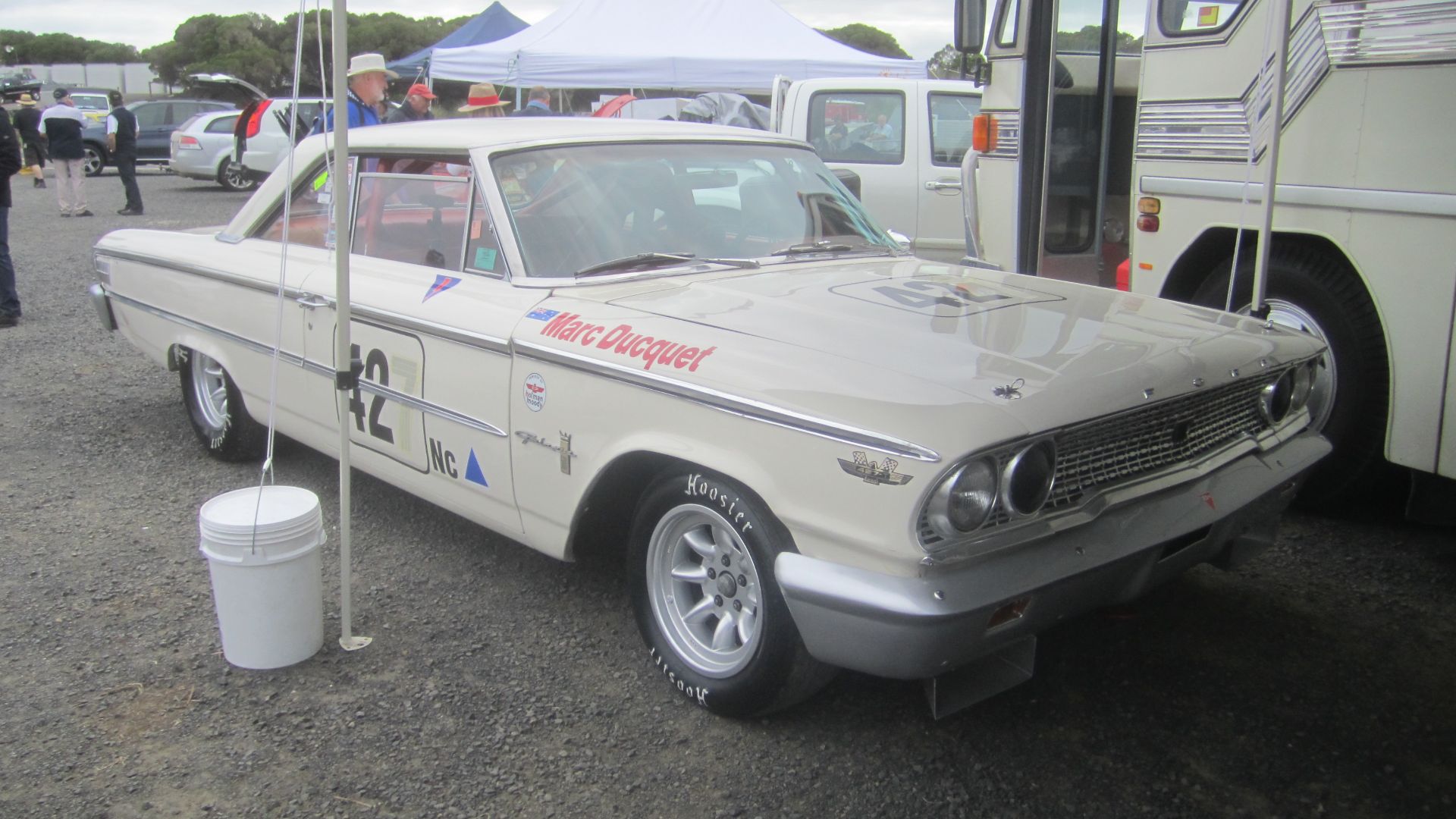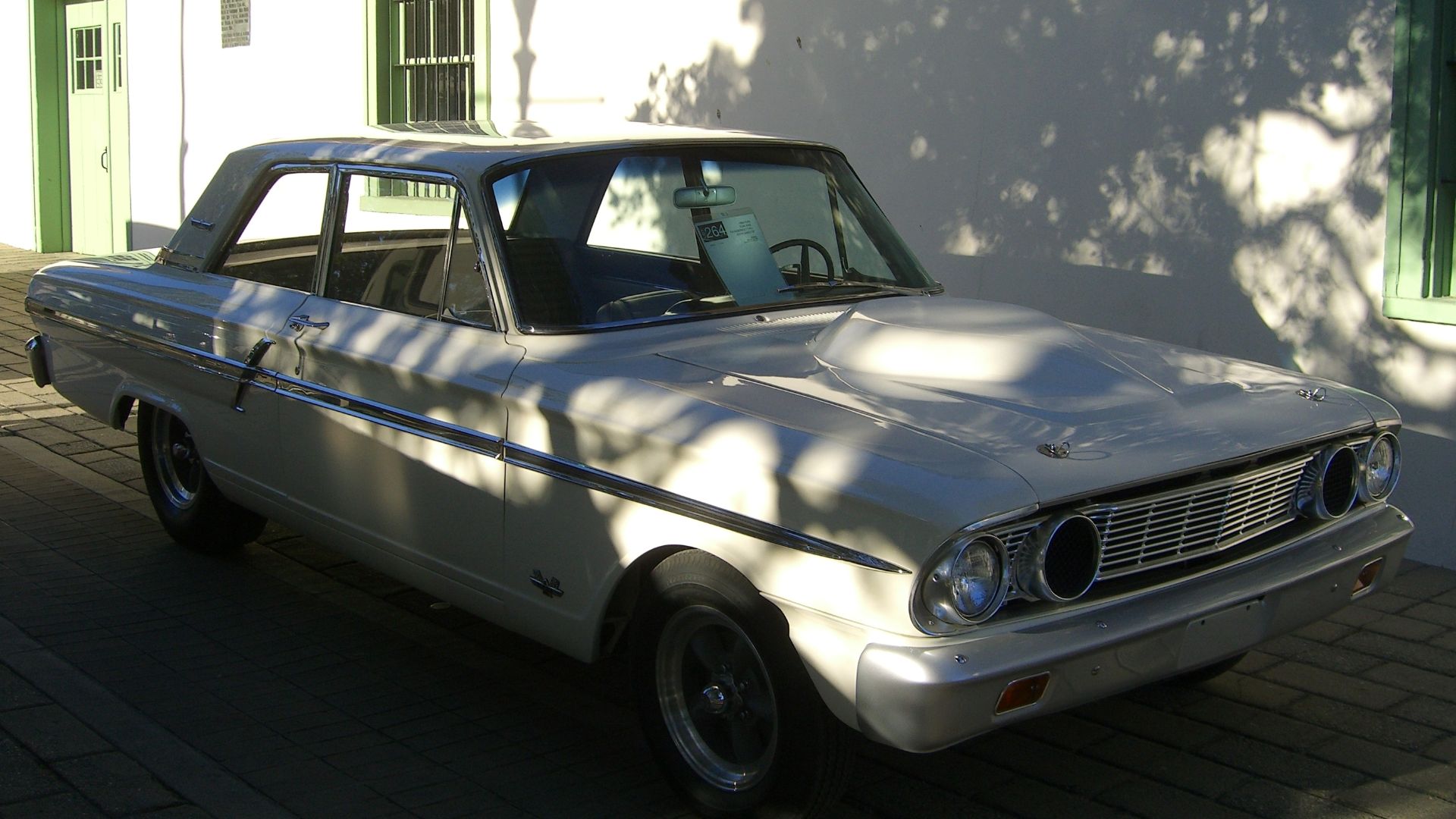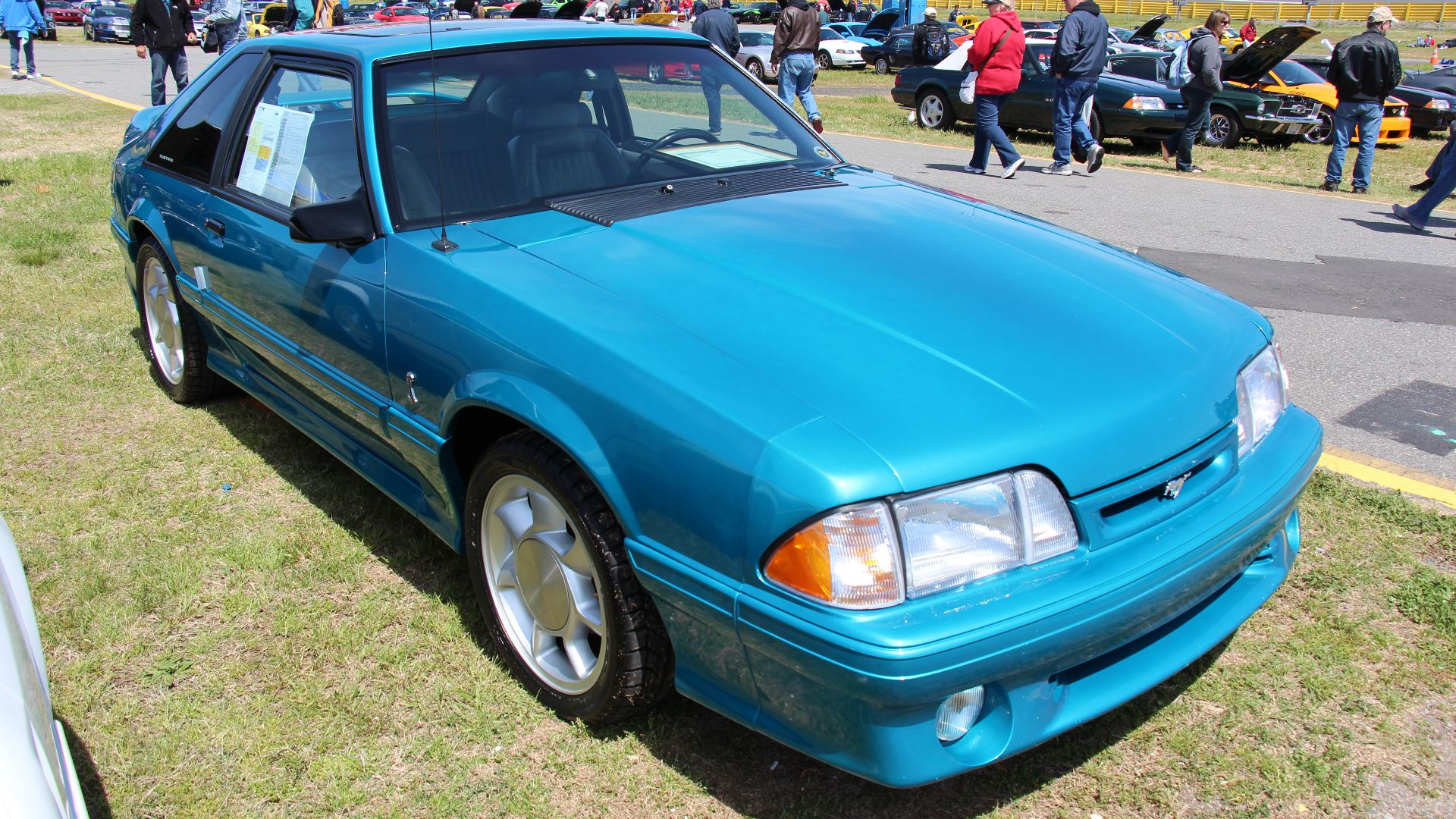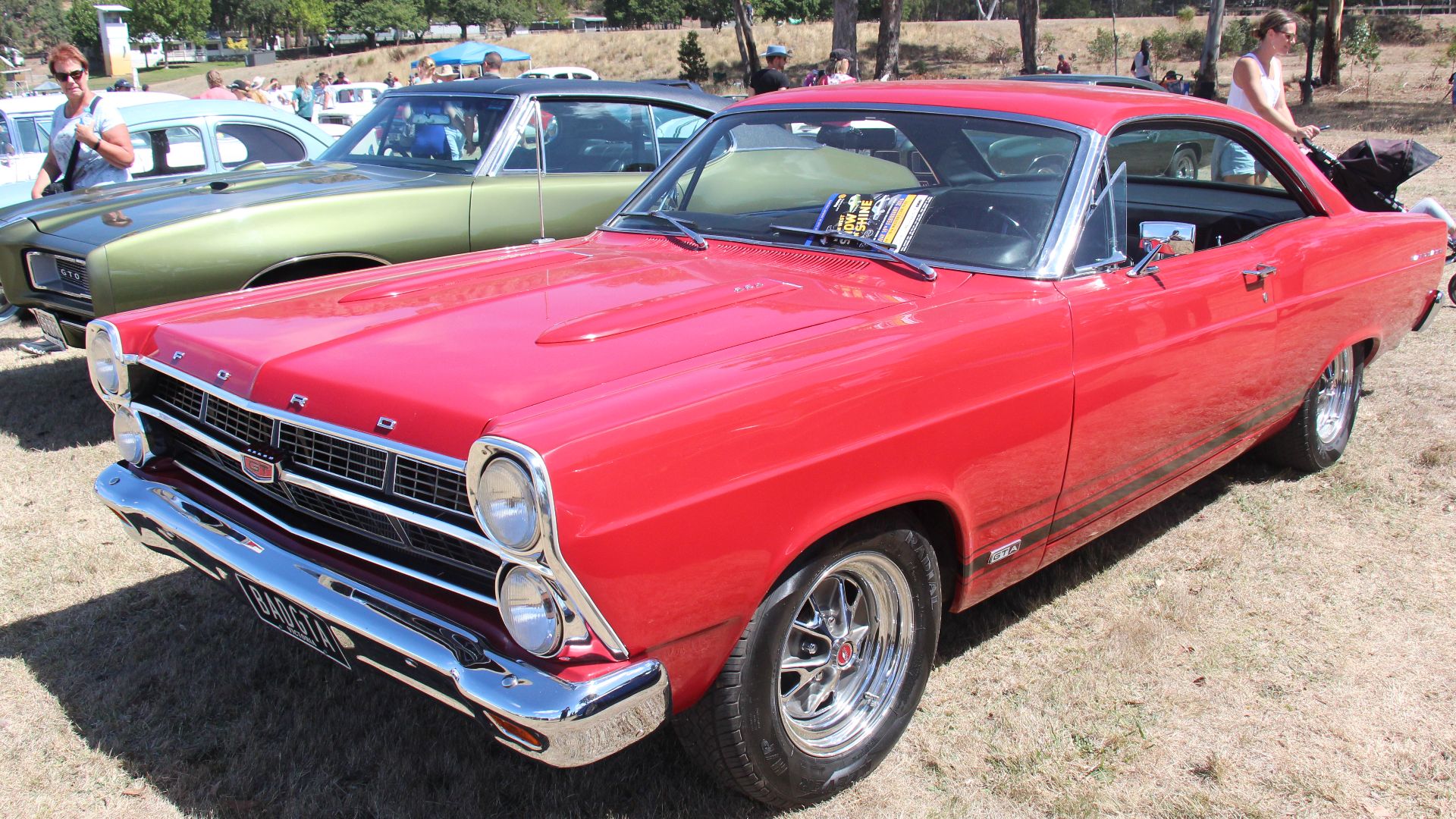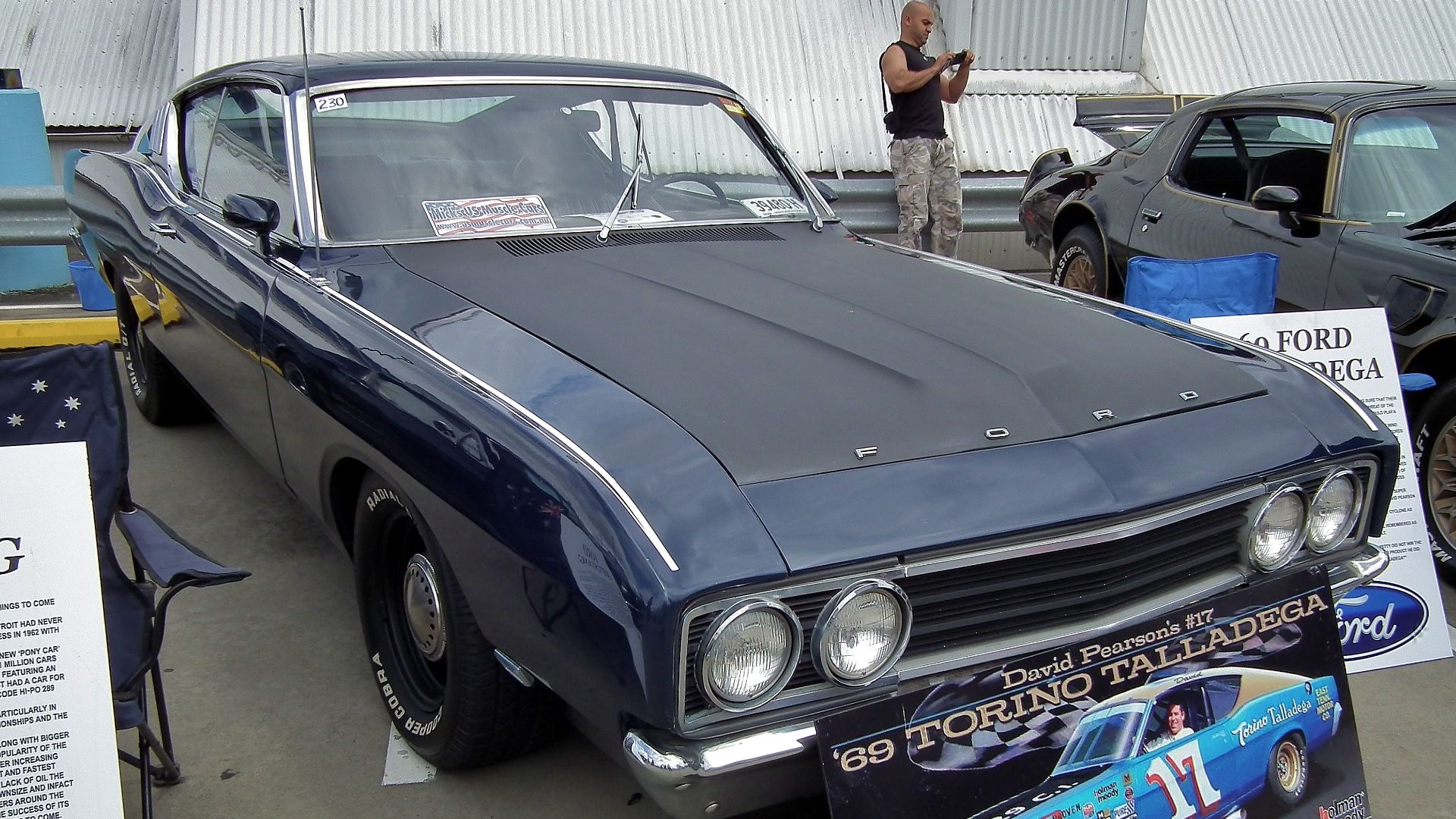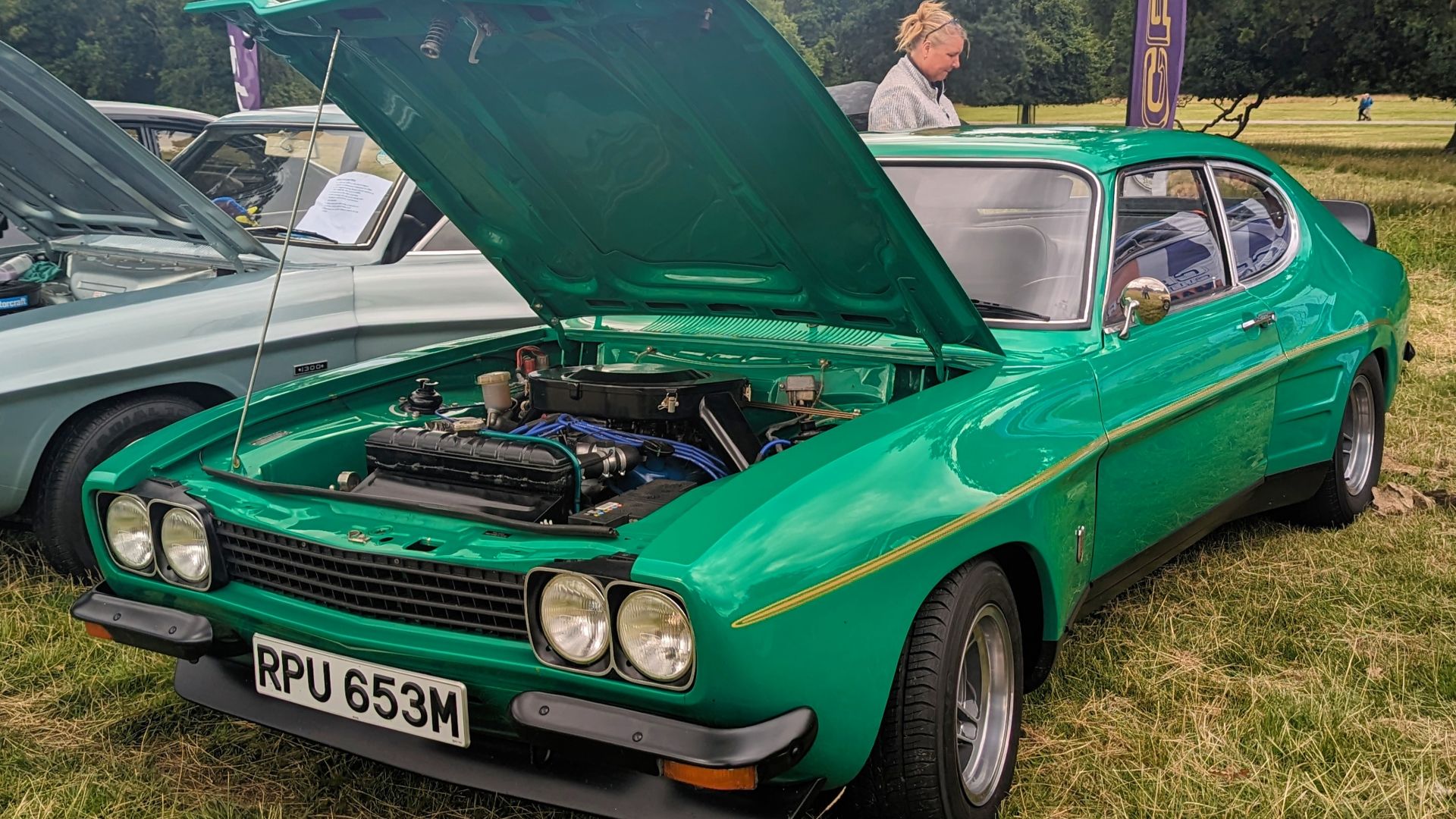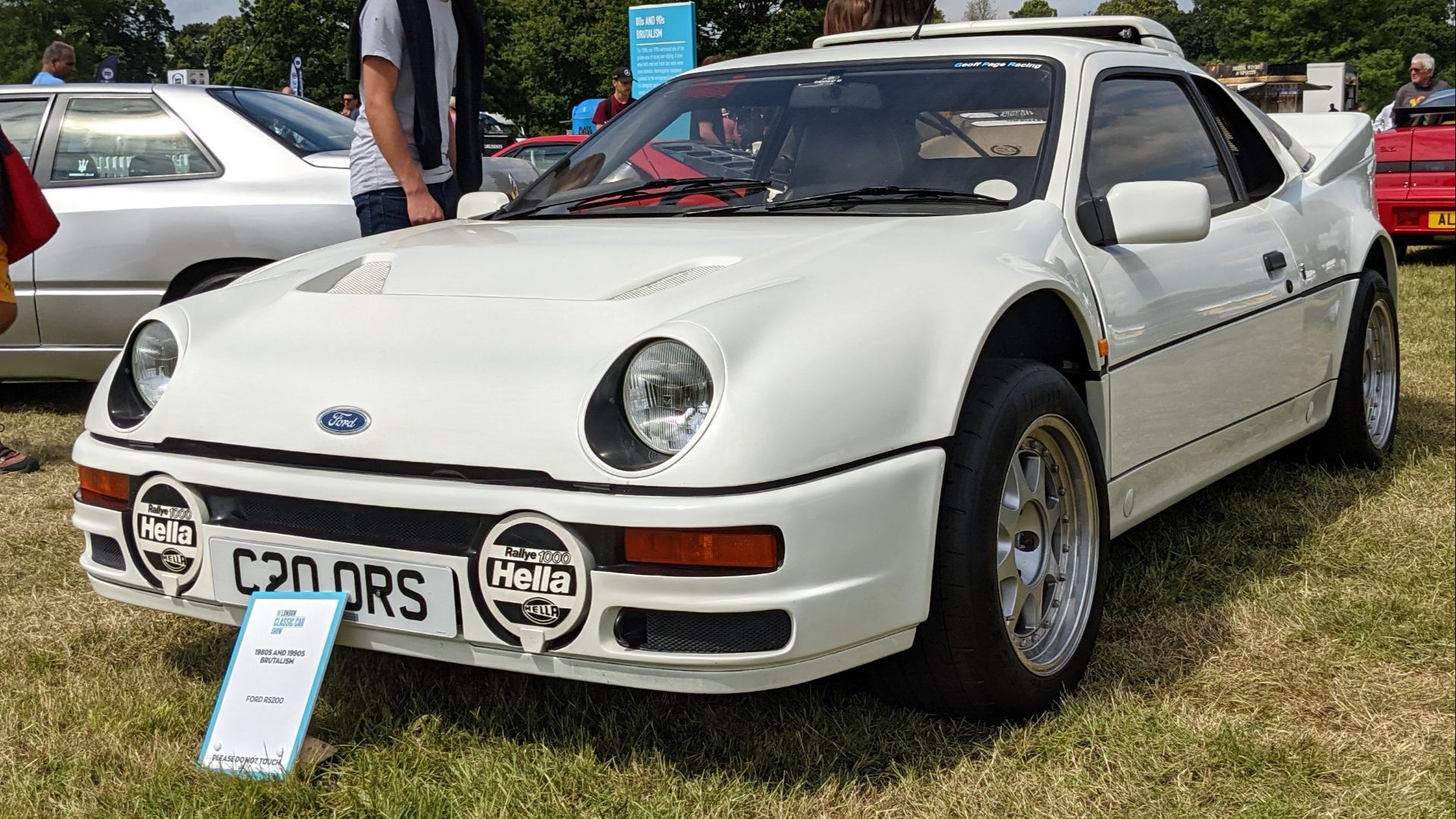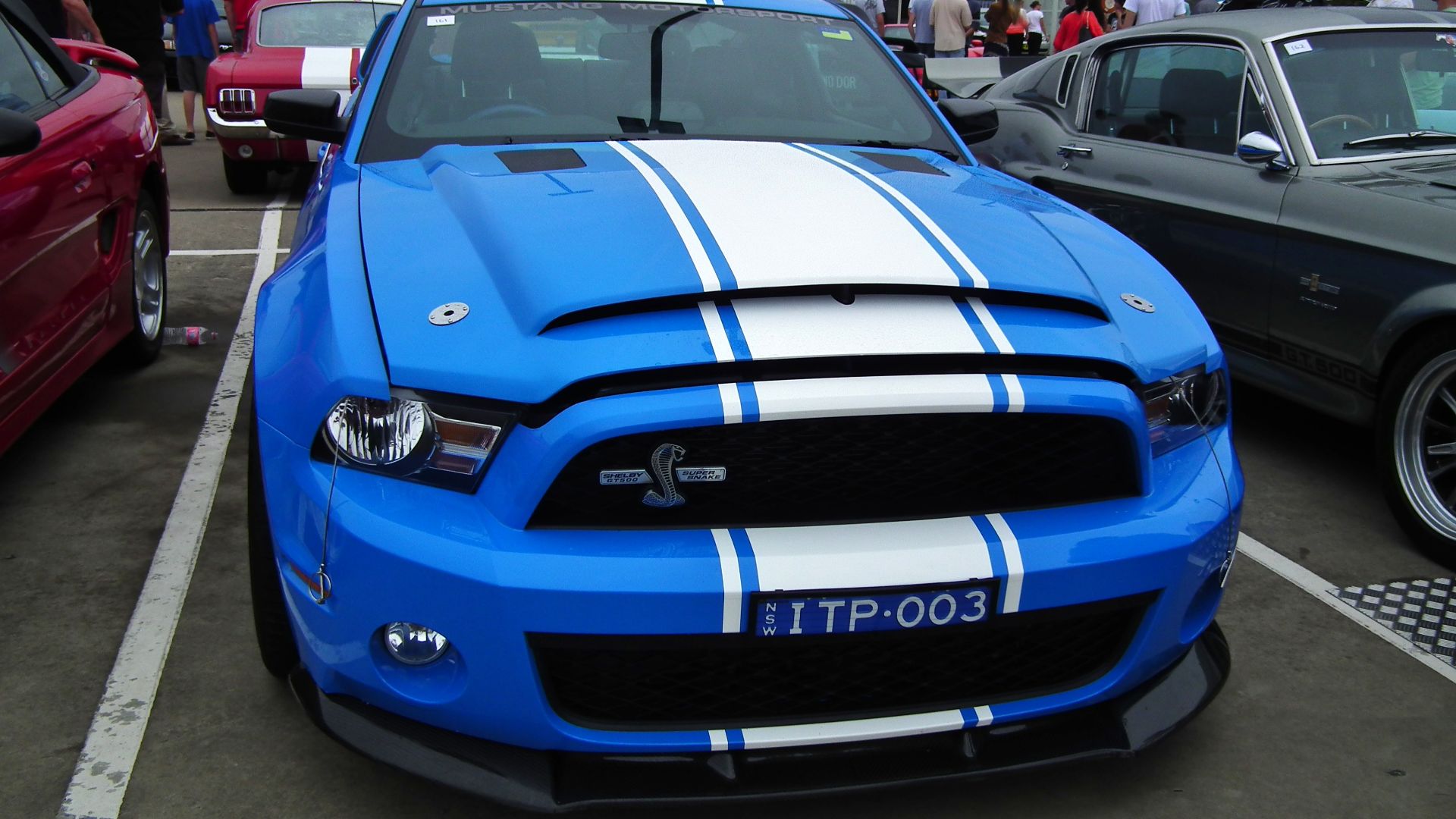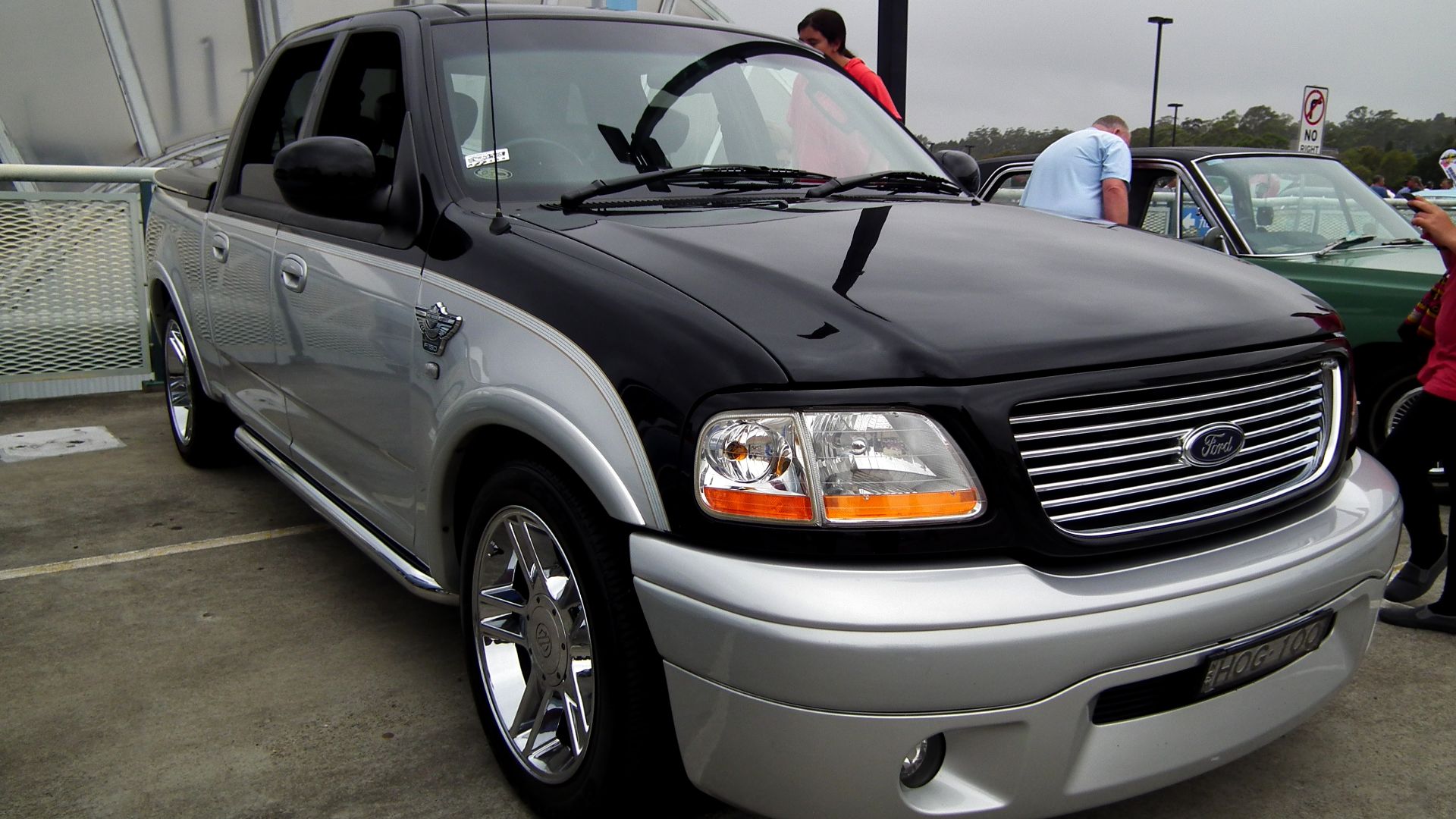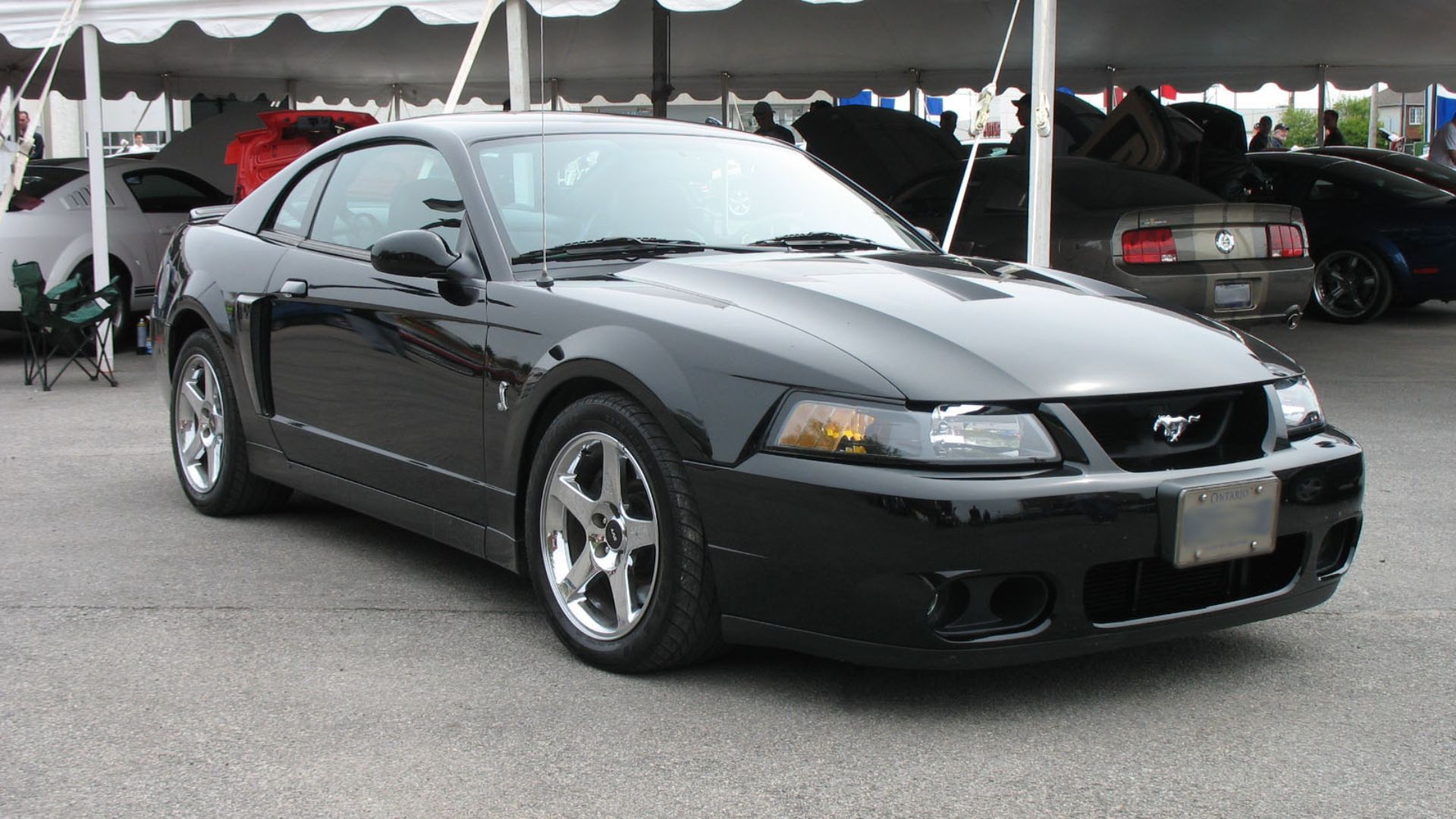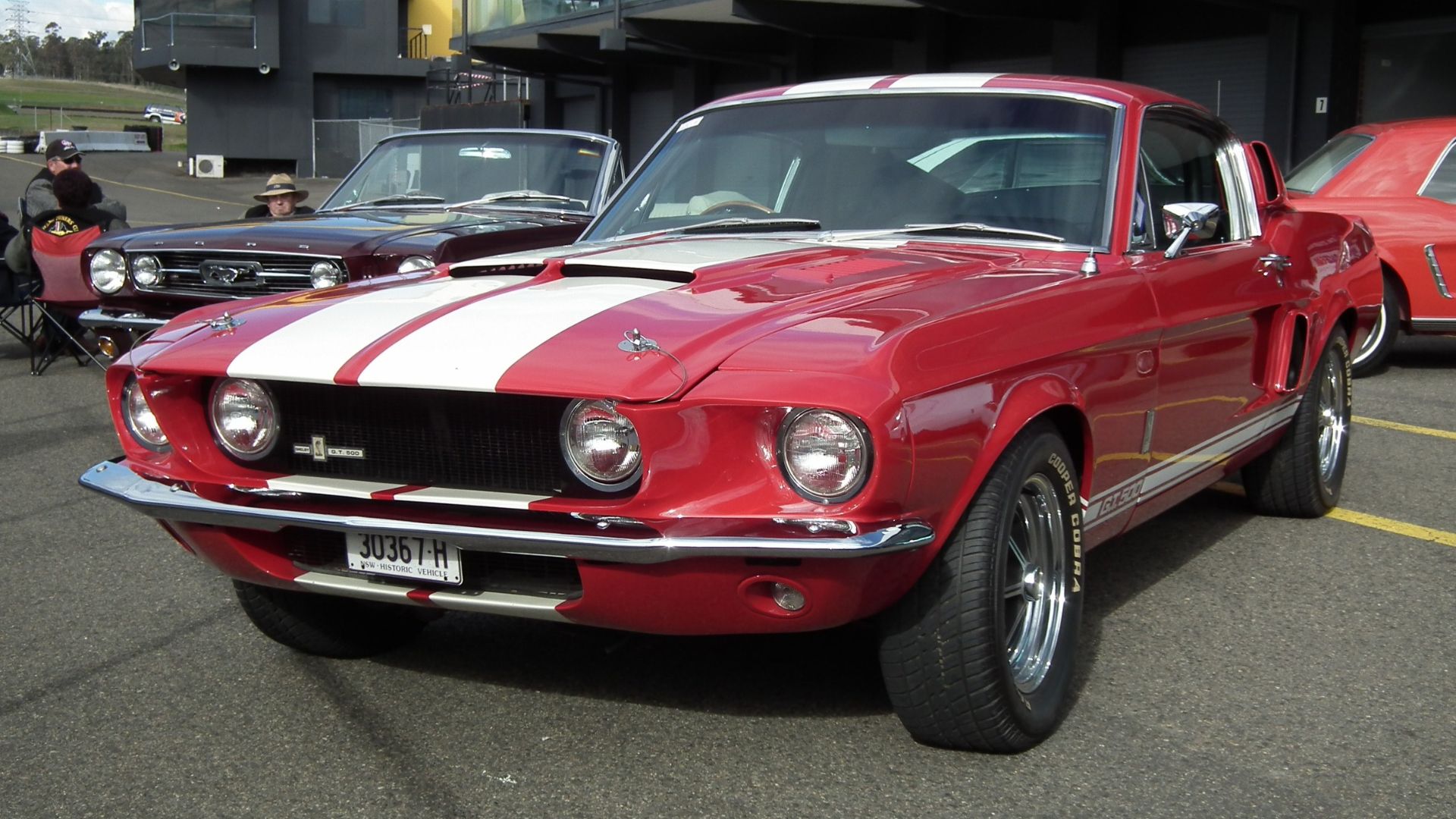You May Never See These Ford Classics On The Road
Ford is one of the most well-known American car manufacturers and is the company that brought the automobile to the general public, creating the first affordable automobile in human history. Although not the first car in human history, Ford's Model T is why so many Americans could afford to drive in the early 20th century. Alongside the Model T, there are many other Ford classics, but some are so rare that you'd struggle to find one on the road today.
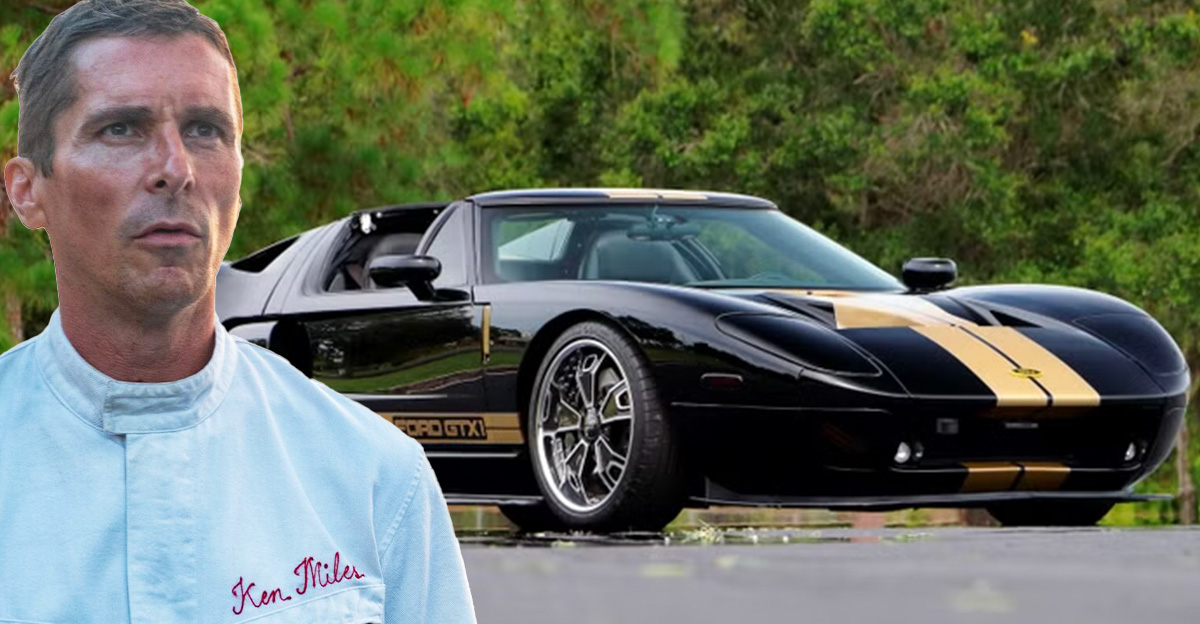
1970 Ford Falcon GT-HO Phase III
Australia might not be a place that you'd think you'd find many classic Fords. But, alongside Eric Bana's classic Ford Falcon, there's this beast from 1970. The GT-HO Phase III was the racing version of the Ford XY Falcon GT. That alone packed a serious punch: a 5.7L V8 engine that produced a staggering 300 hp. The racing version? Even crazier.
 Ford Falcon GT-HO Phase III: Australia's greatest ever muscle car | MOTOR, Motor
Ford Falcon GT-HO Phase III: Australia's greatest ever muscle car | MOTOR, Motor
1970 Ford Falcon GT-HO Phase III (Cont'd)
Powered by a Cleveland 351 engine, it's often said that this racing version of the GT-HO's 300 horsepower was understated to satisfy insurers, and it actually produced 350-380 hp. In addition, the car had special brakes, a special handling package, and an enormous 164L fuel tank. With a top speed of 142 mph, it could accelerate to 60 mph in just 6.9 seconds. Just 300 of these were produced, with many selling for over $1 million AUD.
 Ford Falcon GT-HO Phase III: Australia's greatest ever muscle car | MOTOR, Motor
Ford Falcon GT-HO Phase III: Australia's greatest ever muscle car | MOTOR, Motor
2000 Ford Mustang SVT Cobra R
The early 2000s saw Ford needing a win. That came in the form of the SVT Cobra R. Just 300 of these exclusive high-performance Mustangs were produced, powered by a 5.4L V8 engine that produced 385 hp, with an incredible top speed of 177 mph. No surprise for a high-performance Mustang, but the unique exterior is what caught people's eye.
2000 Ford Mustang SVT Cobra R (Cont'd)
For a car of the new millennium, Ford would have to do something to push the boat out. And they did. They redesigned the hood of the SVT Cobra R to be a "power dome" shape, taller than that of the regular cobra, and even included cut-away gills that reduced engine temperatures. A front fascia redux also made the SVT Cobra look more powerful, somehow.
1964 Ford GT40 Prototype
The legendary Ford GT40 was the car that made Ford a force in the racing world, but this prototype model was one of just two developed by Ford in 1964 to test whether or not Carroll Shelby's 4.7L V8 engine was up to the task of beating Ferrari. Much of the exterior of the car was built in Slough, England, with Americans completing the project back in Detroit.
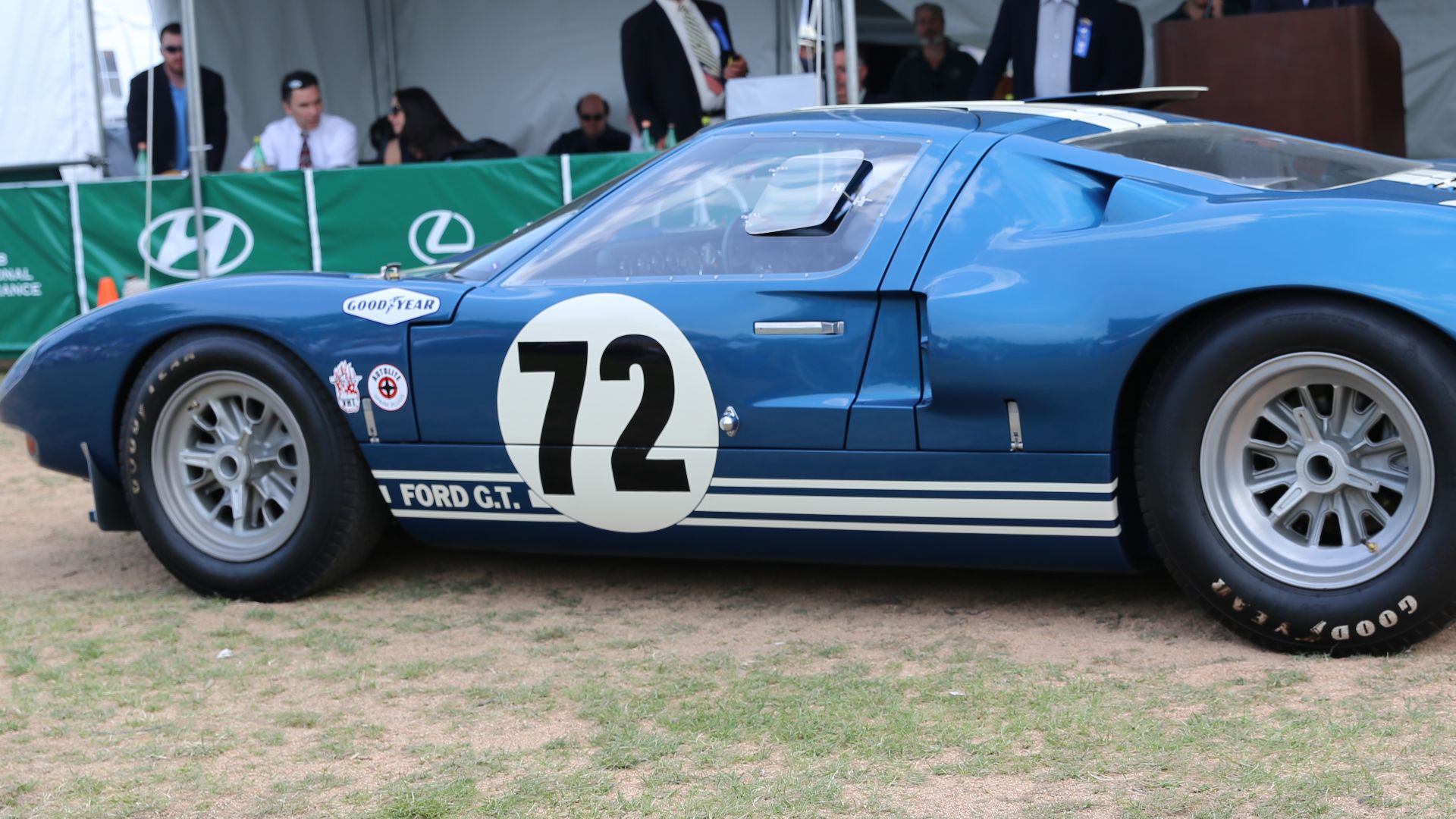 Mr.choppers, Wikimedia Commons
Mr.choppers, Wikimedia Commons
1964 Ford GT40 Prototype (Cont'd)
Pressed steel tubing provided an aerodynamic chassis, while pin-holes poked in the seats provided the driver with ventilation. A white main color with a black hood and a white circle on it denoted the prototype. The entirely new car was a failure upon its first entry into Le Mans that year, but Ford learned valuable lessons that it would take with it to victory in the future.
 $7 Million 1964 Ford GT40 Prototype - Mecum Auctions, Mecum Auctions
$7 Million 1964 Ford GT40 Prototype - Mecum Auctions, Mecum Auctions
1963 Ford Galaxie 500 Lightweight
Another car designed for homologation purposes, Ford would build the 1963 Galaxie 500 Lightweight as a means of dominating the National Hot Rod Association's drag racing scene. Powered by a 7.0L V8 engine that delivered 425 hp, the Galaxie 500 could reach 60 mph in just over six seconds, with a top speed of 150 mph.
1963 Ford Galaxie 500 Lightweight (Cont'd)
Ford shed all unnecessary components to make the car as lightweight as possible. We're talking almost all interior luxury components taken out, heaters and radios gone, and aluminum bumpers, hood, and fenders, combined with a fiberglass trunk lid. Just 212 units were built of this legendary Ford drag racer.
 1963 Ford Galaxie 500 Lightweight // Lot F189 // Mecum Kissimmee 2018, Mecum Auctions
1963 Ford Galaxie 500 Lightweight // Lot F189 // Mecum Kissimmee 2018, Mecum Auctions
1964 Ford Thunderbolt
This was another homologation special from Ford, built just a year after the Galaxie 500 Lightweight. The Thunderbolt, built as a limited edition of just 100 units, was powered by a 7.0L V8 engine that produced 425 hp and could cover the 1/4 mile in 11 seconds. One run even saw it reach speeds of 128 mph.
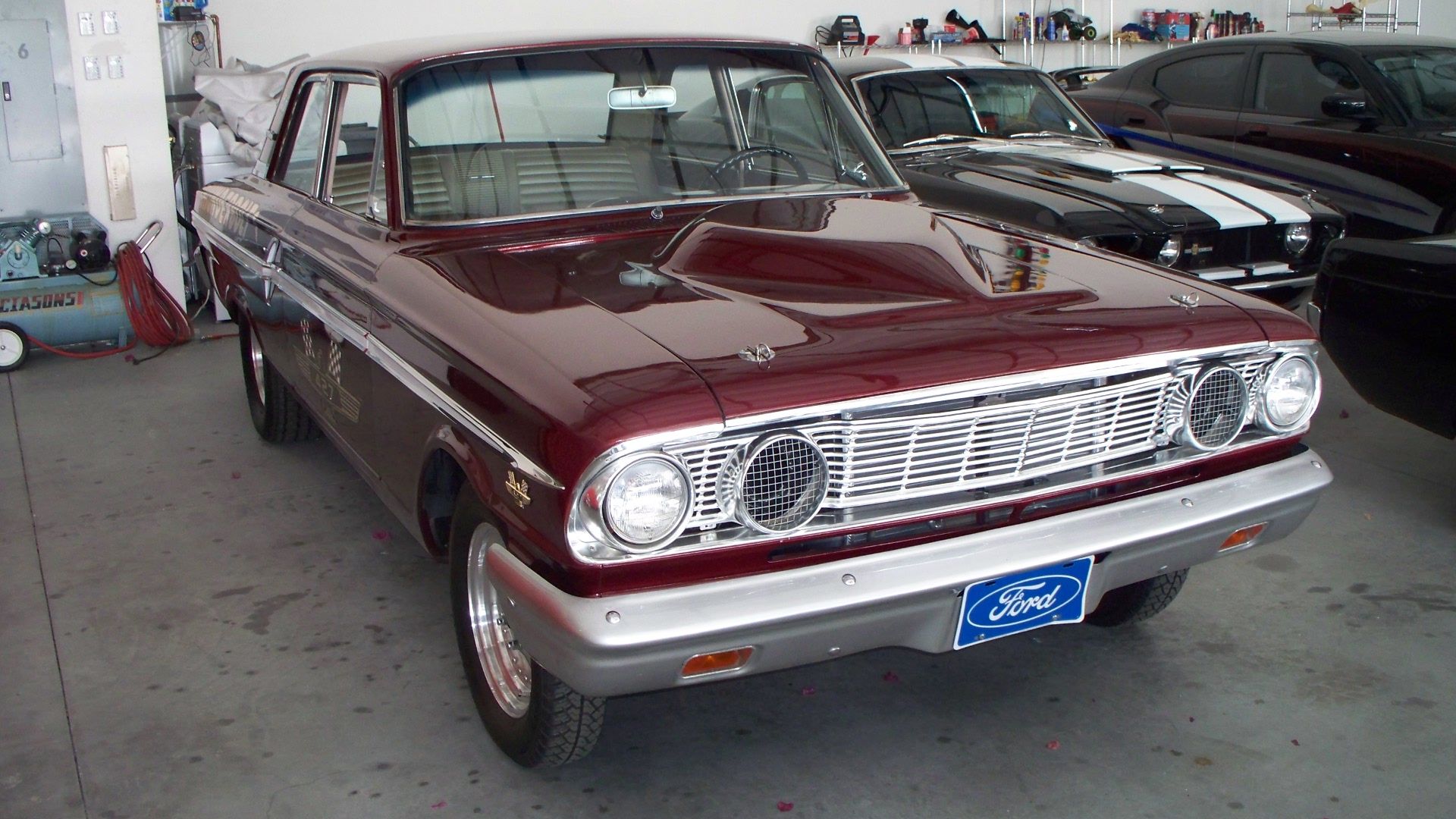 PMDrive1061, Wikimedia Commons
PMDrive1061, Wikimedia Commons
1964 Ford Thunderbolt (Cont'd)
Like the Galaxie 500 Lightweight, Ford reduced weight in the Thunderbolt by chopping off all the unnecessary parts. No sun visors, seat covers, passenger-side windshield wipers, radio, heaters, carpeting, not even a jack and spare tire were to be found. On the plus side, this rare drag racer did help Ford win the National Hot Rod Association's championship that year.
1993 Ford SVT Mustang Cobra R
Seven years before the 2000 Ford SVT Mustang Cobra R, there was the "OG" 1993 version. Designed to introduce Ford's high-performance cars of the SVT division, the '93 Mustang Cobra R featured an upgraded 4.9L V8 engine, producing 235 hp and reaching 60 mph in under six seconds. The "R" version was the even beefier model.
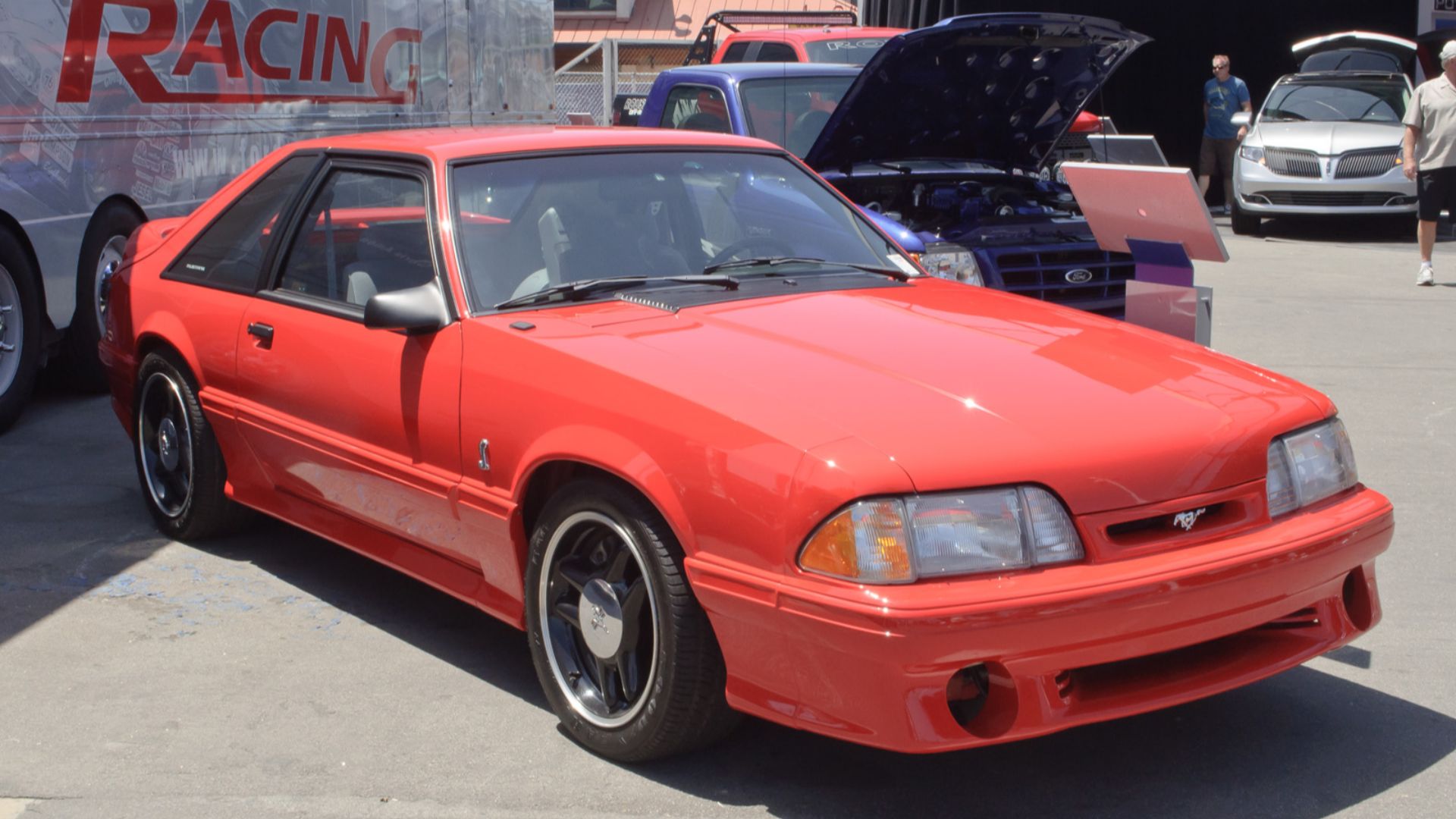 InSapphoWeTrust from Los Angeles, California, USA, Wikimedia Commons
InSapphoWeTrust from Los Angeles, California, USA, Wikimedia Commons
1993 Ford SVT Mustang Cobra R (Cont'd)
No radio, no speakers, no AC, no wiring or antenna, no foglights or even a rear seat. The "R" was intended to do one thing: go fast. Just 107 of these units were produced, with each painted in the same Vibrant Red color. The same engine powered the "R", but its speed was upgraded to reach 140 mph.
1970 Ford Mustang Twister Special
No, not the movie Twister, but the eccentric name given to a very limited edition 1970 Ford Mustang. The Twister Special featured tornado decals on the rear quarter panels, along with black mid-level stripes on the body. Just 96 were built in 1970, and all were sold through Kansas City Ford dealers only.
 1970 Ford Mustang Twister Special, American Muscle Car Museum
1970 Ford Mustang Twister Special, American Muscle Car Museum
1970 Ford Mustang Twister Special (Cont'd)
Just 52 of these cars are thought to exist today, but only 18 feature the original 5.7L V8 and a Drag Pack suspension. All were painted in one solid color: Grabber Orange, before the addition of the black racing stripes. The body is based on the Mustang Mach 1, which is a two-door coupe.
 1970 Ford Mustang Twister Special, American Muscle Car Museum
1970 Ford Mustang Twister Special, American Muscle Car Museum
1967 Ford Fairlane 500 R Code
In 1967, Ford wanted to produce a Fairlane sedan that could compete on the racetrack. It came up with the 1967 Ford Fairlane 500 R Code, designed to produce maximum power. It produced 425 hp with a top speed of over 150 mph. It was faster than the Ford GT350 R and completed a quarter mile in under 13 seconds, topping out at 114 mph.
1967 Ford Fairlane 500 R Code (Cont'd)
As Ford continued to seek domination in the drag racing sphere, it relied heavily on the Fairlane 500, which it had stripped bare, right down to it not having a radio, antenna, or air conditioning. I suppose if you wanted to wind the windows down at 100+ mph, you'd cool off pretty quickly.
 1967 Ford Fairlane 500 for sale, Mainly MuscleCars
1967 Ford Fairlane 500 for sale, Mainly MuscleCars
1980 M81 McLaren Mustang
The Mustang II is often thought of as the worst Ford Mustang ever produced, so, in 1980, Ford was trying to play catch-up and show the muscle car world that they were back. Enter: a partnership with British racing driver Bruce McLaren and the M81 McLaren Mustang. McLaren had been part of the Ford team for the 1966 Le Mans win, but now he was back on the engineering side, with fantastic results.
1980 M81 McLaren Mustang (Cont'd)
Powered by a 2.3L turbocharged four-cylinder engine, the M81 McLaren Mustang produced 175 hp and could travel from 0 to 60 in 9.76 seconds. The Mustang also featured a spoiler, hood scoop, 15-inch German BBS rims, improved suspension, and many more performance upgrades. It's also extremely rare, with only 10 being built.
 1980 M81 McLaren Mustang Fox Body $75k at Mecum Indy 2023, Derek Whitacre
1980 M81 McLaren Mustang Fox Body $75k at Mecum Indy 2023, Derek Whitacre
1969 Torino Talladega
Following the success of the Ford Fairlane 500 R, the Ford Torino Talladega was green-lit to take its place in the NASCAR circuit in 1969. Powered by an all-new big-block Cobra Jet engine—a 7.0L V8 in its final year of production—the Torino Talladega wasn't as successful on the race track, and it's believed about 749 were produced.
1966 Ford GT40 Mk III
Ford was seeking to homologate another GT40 after their success at Le Mans the previous year, so they produced 84 examples of the Mk III GT40. New safety regulations meant new, raised headlights with sealed, circular beams, and a new quad-barrel Holley carburetor on a simplified 4.7L V8 engine.
1966 Ford GT40 Mk III (Cont'd)
Unfortunately, just eight of these cars were ever completed, as the car was deemed not superior enough to the Mk II to justify the expense. Nevertheless, the Mk III could still perform: 160 mph top speed, 0 to 60 in 5.2 seconds? Insanely fast.
 A Ford GT40 That Never Saw A Race Track, Petersen Automotive Museum
A Ford GT40 That Never Saw A Race Track, Petersen Automotive Museum
1974 Ford Capri 3100
The 1974 Ford Capri 3100 was built specially in 1974 so that Ford could compete in the European Touring Cup. Homologation rules in the 1970s required that a minimum of 1,000 cars be produced, 500 road-going and 500 racing-only. In the end, Ford was only able to build 250 Capri 3100s, each powered by a British V6 engine.
1974 Ford Capri 3100 (Cont'd)
With a top speed of 125 mph and producing 148 hp, the V6 propelled the Capri to 60 mph in 7.3 seconds. The 3100 was a legend of Ford racing in 1974 and is one of the rarest racing Fords you'll find today.
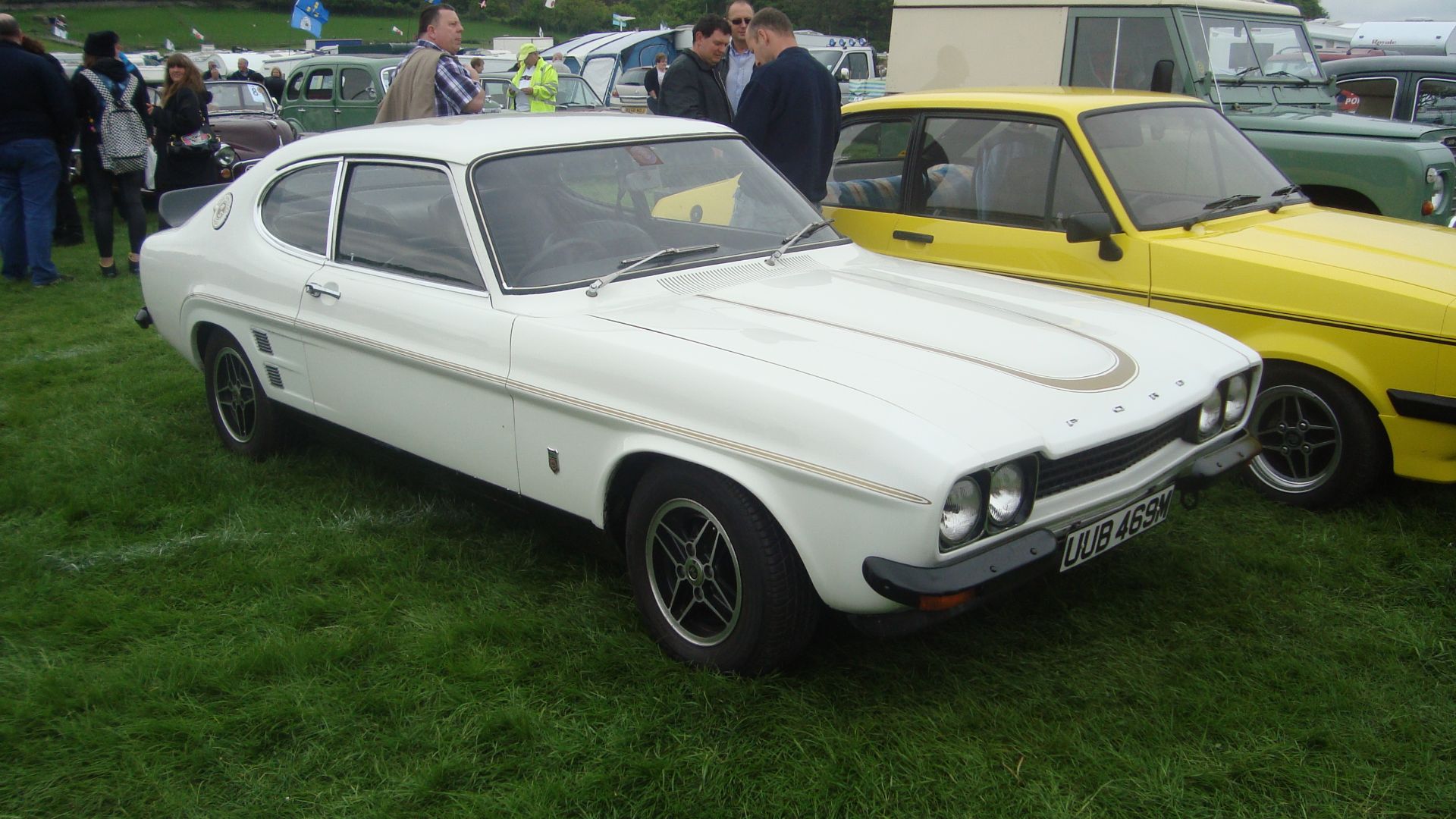 Kieran White from Manchester, England, Wikimedia Commons
Kieran White from Manchester, England, Wikimedia Commons
2003 Ford Thunderbird: Bond Edition
Did you know that James Bond acquired a Ford Thunderbird in the movie Die Another Day (2003)? Pierce Brosnan was given the keys to a gorgeous red Thunderbird (of which only seven were built), but he never drove it in the film. A rare car that's only ever been seen with someone else behind the wheel.
 2003 Ford Thunderbird 007 Edition walk around video!, Lancaster Car Company
2003 Ford Thunderbird 007 Edition walk around video!, Lancaster Car Company
1984 Ford RS200
10 years after the Ford Capri, came the RS200. Only produced in the UK between 1984 and 1986, the road-going rally car was designed to comply with homologation rules at the time. Powered by a 1.8L straight-four cylinder engine, the car was designed with an ultra-lightweight plastic-fiberglass body, designed by Ghia of Italy. The engine produced 250 hp on the road-going version, or between 350 and 450 on the racing trim.
1984 Ford RS200 (Cont'd)
Unfortunately, Ford's Cosworth engine proved underwhelming during its first rally season and it could only ever achieve a third-place finish, at best, throughout its time on the track. In 1986, it was also involved in a terrible accident which cost the life of a driver and co-driver after the car crashed into a tree.
2009 Lee Iacocca's 45th Anniversary Ford Mustang
In 2009, Ford celebrated the 45th anniversary of Lee Iacocca, Ford's legendary automotive executive who designed the Ford Mustang, Lincoln Continental, and the ill-fated Ford Pinto. To celebrate the 45th anniversary, Ford released a special edition Ford Mustang, powered by a 4.6L V8 engine.
 2009 Iacocca Edition Mustang test drive at Laguna Classic Cars, Laguna Beach, Ca, Andy Coyle
2009 Iacocca Edition Mustang test drive at Laguna Classic Cars, Laguna Beach, Ca, Andy Coyle
2009 Lee Iacocca's 45th Anniversary Ford Mustang (Cont'd)
It was only available in an all-silver color palette using composite materials, with an all-black leather interior. The 4.6L V8 engine produced 400 hp. Only 45 of these were ever produced.
 2009 Iacocca Edition Mustang test drive at Laguna Classic Cars, Laguna Beach, Ca, Andy Coyle
2009 Iacocca Edition Mustang test drive at Laguna Classic Cars, Laguna Beach, Ca, Andy Coyle
2012 Ford Shelby GT500 Super Snake
In 2012, the Ford Shelby GT500 Super Snake was the first convertible Shelby Mustang offered since 1970. Powered by a naturally-aspirated engine, the Super Snake's 5.4L V8 engine produced 540 hp and offered an incredible top speed of 180 mph, while reaching 60 mph in an astonishingly fast 4.19 seconds
2012 Ford Shelby GT500 Super Snake (Cont'd)
It wasn't just under the hood; the GT500 Super Snake had been totally redesigned on the outside, too. Unique front and rear fascia greeted you, along with a rear spoiler with a Gurney flap and a hood scoop. It was offered with Ford's typical racing stripes. Production of the car was limited to just 2,000 units.
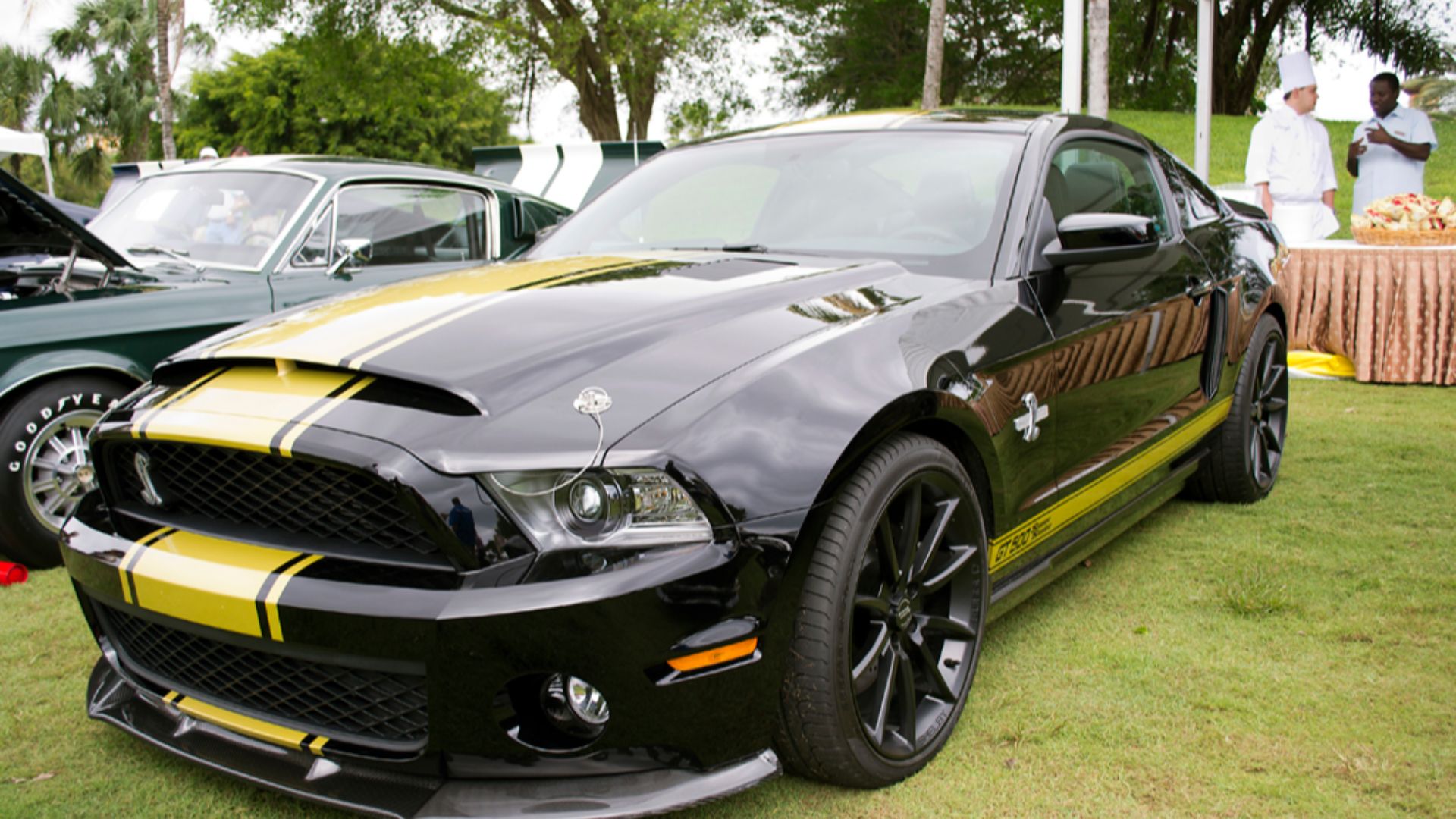 Brett Levin, Wikimedia Commons
Brett Levin, Wikimedia Commons
2012 Ford Mustang Boss 302 Laguna Seca
Also in 2012, Ford unveiled the Mustang Boss 302 Laguna Seca, named after the Northern California race track. The 5.0L V8 was upgraded slightly to 32 more horsepower than the standard 444. It was viewed as the "track version" of the 302 Boss, as the rear seats were replaced with an X-brace to increase stability, and the car came with racing seats as standard.
 Brett Levin, Wikimedia Commons
Brett Levin, Wikimedia Commons
2012 Ford Mustang Boss 302 Laguna Seca (Cont'd)
Performance-wise, it rockets to 60 mph in 4.3 seconds and has a top speed of 146 mph. Just 750 of this racing-centric version of the Boss 302 were ever built.
 2012 Ford Mustang Boss 302 Laguna Seca Start Up, Exhaust, and In Depth Tour, Saabkyle04
2012 Ford Mustang Boss 302 Laguna Seca Start Up, Exhaust, and In Depth Tour, Saabkyle04
1987 Ford F-250 Bigfoot Cruiser
In 1987, Ford wanted to capitalize on the Bigfoot craze sweeping the United States, so they invested heavily in a super-sized monster-truck build: the F-250 Bigfoot Cruiser. Many inches of lift were added, along with 33-inch tires, and a light bar up top covered in "Bigfoot" leather light covers when not in use. Unfortunately for Ford, the "monster truck" wasn't really a huge commercial hit, mostly among off-road enthusiasts. A year later, Ford was dealing with major recalls on the Bigfoot and discontinued the model shortly afterwards. Only 300 were ever built.
 1987 F-250 BIGFOOT For Sale, Vanguard Motor Sales
1987 F-250 BIGFOOT For Sale, Vanguard Motor Sales
The Many Black Fords - 100th Anniversary Edition
In 2003, Ford celebrated its 100th anniversary as a company. To commemorate that, it unveiled a very limited edition run of all of its most popular types of vehicles: the Mustang, the Super Duty Crew Cab truck, the Focus, the Taurus, and the Explorer. These were all painted black in honor of Henry Ford's famous words that people "would buy any color as long as it is black".
The Many Black Fords - 100th Anniversary Edition (Cont'd)
All of the cars come with their standard fare of engines, transmissions, and performance parts, but their interiors are decorated with premium Verona leather and a black clearcoat exterior paint. A commemorative keychain and watch were thrown in, along with a coffee table book entitled The Ford Century.
1970 Ford Torino King Cobra
In 1970, Ford was hungry for more NASCAR success and introduced the Ford Torino King Cobra as a replacement for the above-mentioned Talladega. It was designed with curvy lines and a sloped front end that sort of resembled Japanese manufacturer Datsun's 240Z. A center stripe was added along the side to give it some flare.
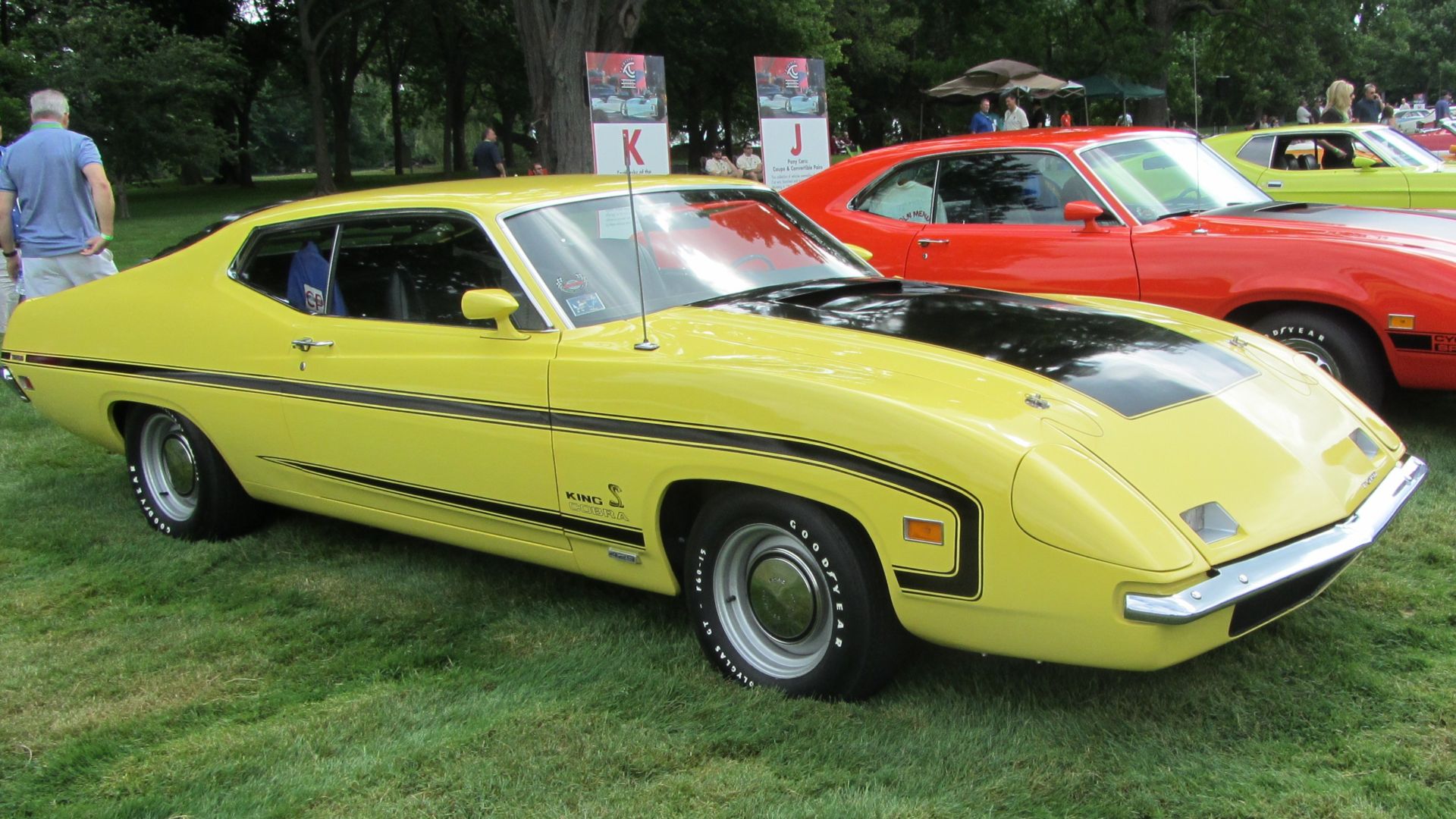 JOHN LLOYD from Concrete, Washington, United States, Wikimedia Commons
JOHN LLOYD from Concrete, Washington, United States, Wikimedia Commons
1970 Ford Torino King Cobra (Cont'd)
Unfortunately for Ford, the Torino King Cobra never came to fruition. Only three prototypes were built when Ford's new CEO, Lee Iacocca (that one), canned the project after NASCAR changed homologation rules concerning how many cars would need to be built.
 1970 Ford Torino King Cobra - Mecum Kissimmee 2016 Lot F104, Mecum Auctions
1970 Ford Torino King Cobra - Mecum Kissimmee 2016 Lot F104, Mecum Auctions
1967 Ford GT500 - Little Red
Dubbed "Little Red", this 1967 Ford GT500 is one of a kind. It's an experimental prototype from Ford, back when they were developing the GT500 in '67, and was the only GT500 coupe built at the time—thus, it was packed with experimental parts. Little Red was discovered in a field in Texas in 2018, wasting away, but was beautifully restored and went up for auction later that year, alongside another very rare Mustang: the Green Hornet.
1968 Ford GT500 - Green Hornet
The other notchback prototype worked on by Carroll Shelby in the pre-GT500 era was this beauty: the Green Hornet. Built a year after Little Red, the Green Hornet was fitted with a 7.0L V8 Cobra Jet engine with electronic fuel injection. Repainted a deep green color with "EXP500" livery along the side, denoting it was a prototype, the Green Hornet is also one of a kind.
 THE GREEN HORNET - 1968 Shelby Mustang EXP-500 Prototype - BARRETT-JACKSON, Barrett-Jackson
THE GREEN HORNET - 1968 Shelby Mustang EXP-500 Prototype - BARRETT-JACKSON, Barrett-Jackson
Which Rare Ford Is Your Favorite?
Let us know which rare Ford is your favorite in the comments below. Are you a fan of the speeding Ford GT40, or a classic rare muscle car like the GT500's Little Red or Green Hornet? Maybe a fan of the Australian Falcon instead? Let us know!
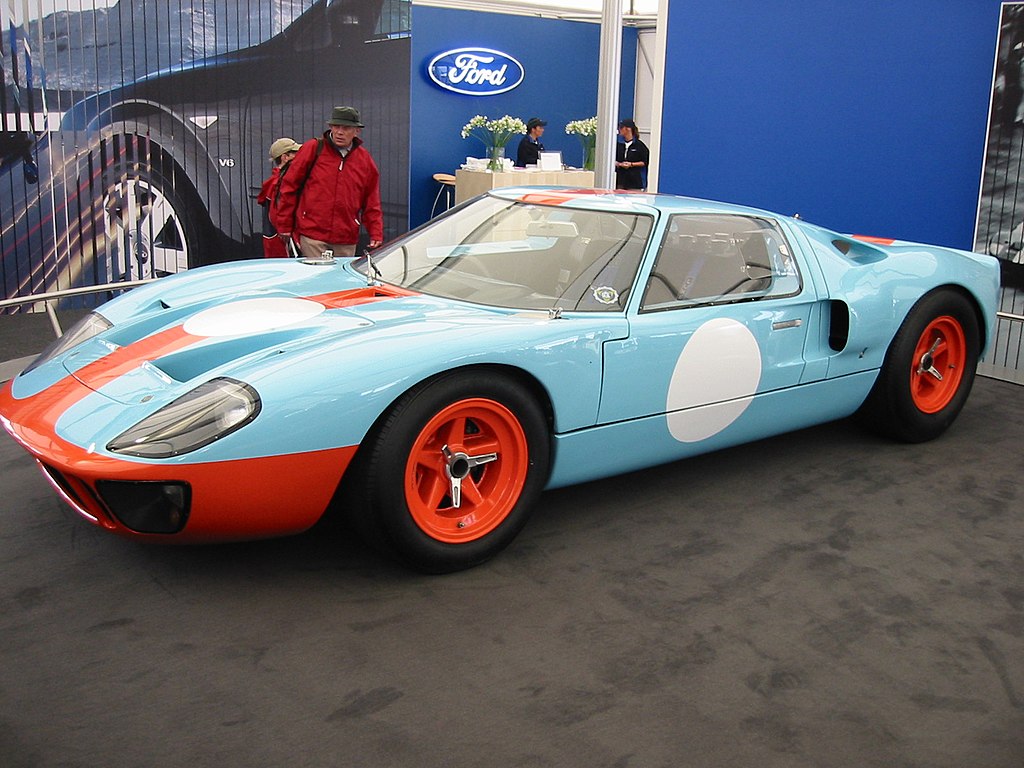 edvvc, CC BY 2.0, Wikimedia Commons
edvvc, CC BY 2.0, Wikimedia Commons
You May Also Like:
Celebrities Who Drive Teslas & Some Who Ditched Theirs
Problematic Used Cars You Probably Shouldn't Buy


